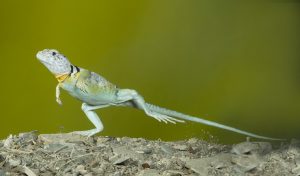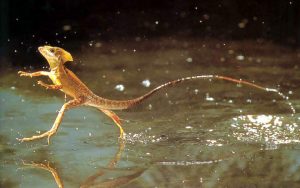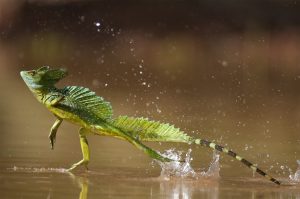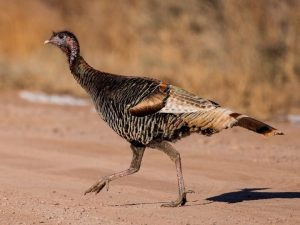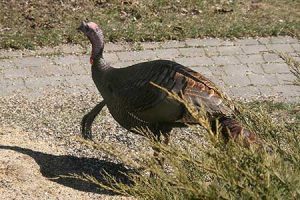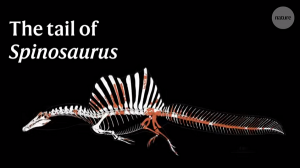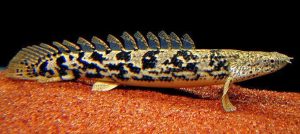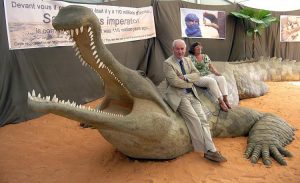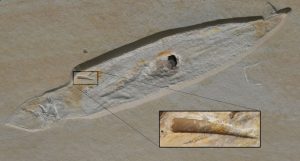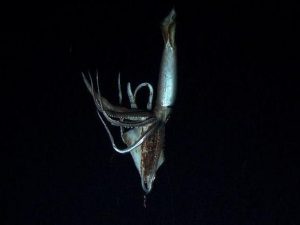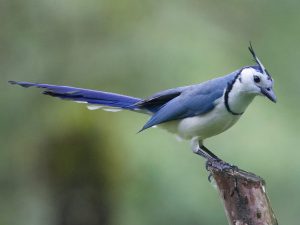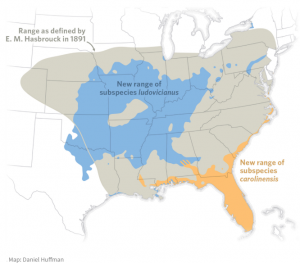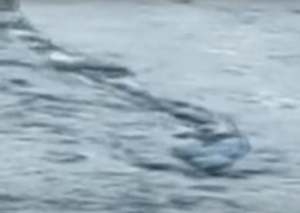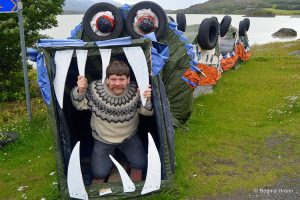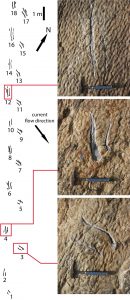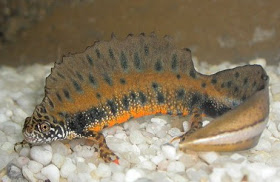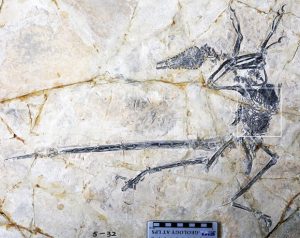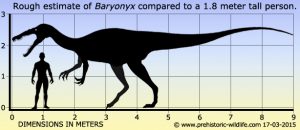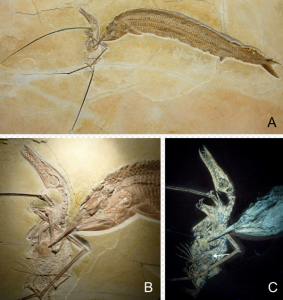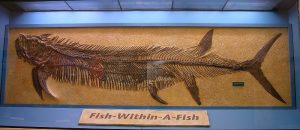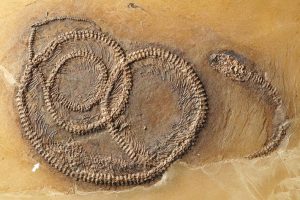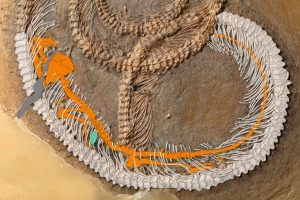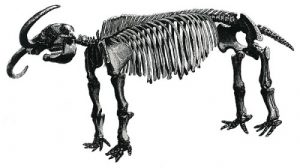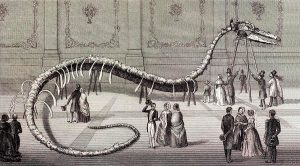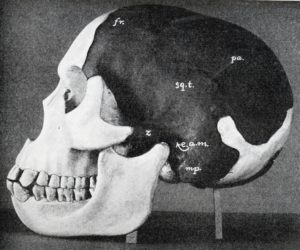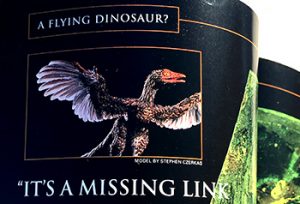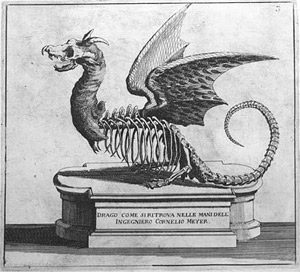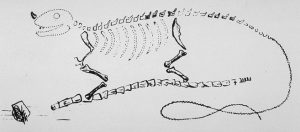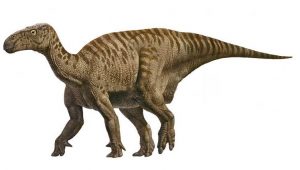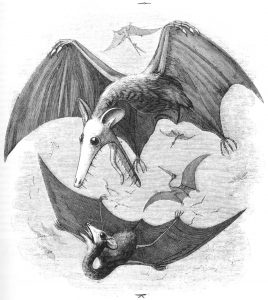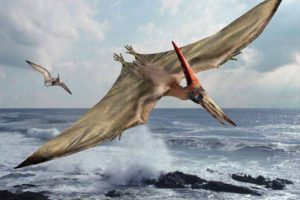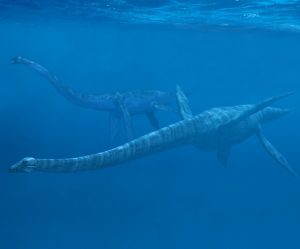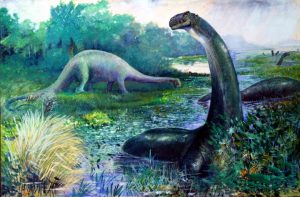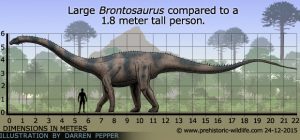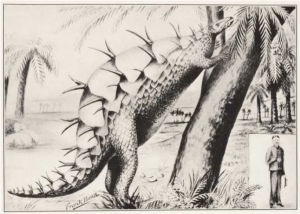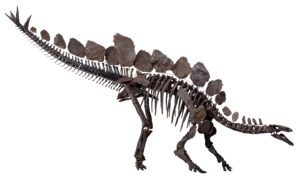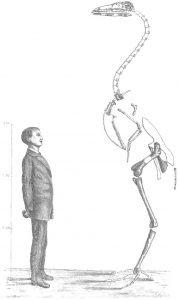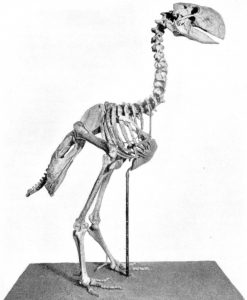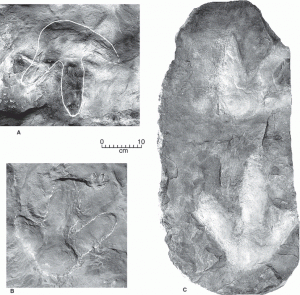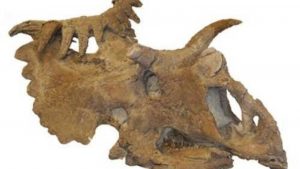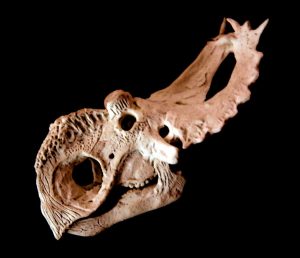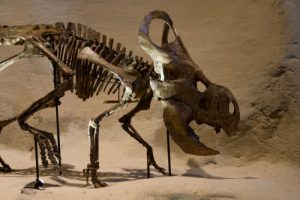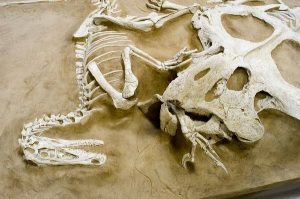Podcast: Play in new window | Download (Duration: 24:51 — 28.7MB)
Subscribe: | More
Sign up for our mailing list! We also have t-shirts and mugs with our logo!
Here we go. It’s the big one, the Cretaceous-Paleogene extinction event!
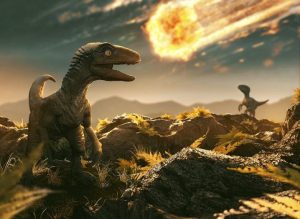
Further reading:
How Birds Survived the Asteroid Impact That Wiped Out the Dinosaurs
How an asteroid ended the age of dinosaurs
Extinction event that wiped out dinosaurs cleared way for frogs
How life blossomed after the dinosaurs died
66-million-year-old deathbed linked to dinosaur-killing meteor
Show transcript:
Welcome to Strange Animals Podcast. I’m your host, Kate Shaw.
Here it is, the extinction event episode that everyone’s been waiting for, or at least that everyone knows about. It’s the one that killed off the dinosaurs and ushered in the age of mammals. It’s probably the one we know most about and it’s certainly the one we have the most paintings of, usually of a T. rex staring into the sky at an approaching comet.
In episode 227 we talked about the end-Permian extinction event, which took place about 250 million years ago. The Cretaceous-Paleogene extinction event, or end-Cretaceous, took place just over 66 million years ago, which means that for almost 200 million years there was more or less smooth sailing in the world. Dinosaurs evolved during that time, and I think we can all agree that dinosaurs are fascinating animals.
The largest terrestrial animals ever to live were dinosaurs, specifically the sauropods. Sauropods were just unimaginably huge. They were like walking buildings that ate plants, and even that doesn’t give a good idea of their size. Some sauropods had extremely long tails as well as very long necks, which increased their length. Right now the largest sauropod known was probably Argentinosaurus that might have grown as long as 118 feet, or 36 meters, but paleontologists keep finding bigger and bigger sauropods. Some sauropods had extremely long necks that they held up like a giraffe. The tallest was probably Barosaurus, estimated as being 72 feet tall, or 22 meters. And we won’t even get into estimates of how much these massive animals weighed. They make the biggest elephant that ever lived look like a toy elephant.
Sauropods ate plants, with the low-necked species eating low-growing plants and the high-necked species eating tree leaves, although even saying that much is controversial. There’s a lot we don’t know about sauropods in general, since most sauropod fossils are incomplete and many species are only known from one or a few bones. But we do know some surprising things about sauropods. We have a lot of sauropod tracks, which helps us understand how their feet looked and whether they had claws, but it also tells us that some species of sauropod traveled in herds. Paleontologists do generally agree that many sauropods migrated, since animals that big would soon exhaust all the food in one area if they didn’t.
Sauropods were extremely successful and lived all over the world. There were plenty of sauropods alive 66 ½ million years ago, and then…there were no sauropods alive ever again.
These days, there’s so much evidence that a massive asteroid killed off the dinosaurs that pretty much everyone agrees, but when the idea was first proposed in 1980, it was extremely controversial. When I was a kid I remember reading dinosaur books that still said the extinction of the dinosaurs was a mystery but that many scientists thought it was due to disease or volcanoes.
The asteroid strike hypothesis was proposed by the physicist Luis Alvarez and his son, Walter. They worked with a small team of other scientists, including two chemists, Helen Michel and Frank Asaro, to investigate a strange anomaly in rock strata. Rocks dating to the end of the Cretaceous period and the beginning of the Paleogene period are separated by a thin layer of clay that’s visible throughout the world, or at least wherever the rocks remain and can be examined. It’s called the Cretaceous-Paleogene boundary, or K-Pg boundary, although in older books and websites it’s called the K-T boundary. It occurred just over 66 million years ago. The Alvarezes were curious about this layer, and during their investigations they found out that the clay is full of an element called iridium.
Iridium is a silvery-white metal chemically related to platinum, and it’s rare. At least, it’s rare on Earth. It’s a common component of asteroids, which was one of the main reasons why the Alvarezes came to their hypothesis that the K-Pg boundary was the result of a massive asteroid impact. Other scientists had made similar suggestions in the decade or so leading up to the Alvarezes’ theory, but the iridium discovery provided the proof everyone wanted.
Iridium wasn’t the only thing found in the K-Pg boundary layer, either. There were other platinum-group metals present in high concentrations—much higher than found on Earth, and in fact these elements are referred to as rare-earth metals for that reason. In some places, the K-Pg boundary contains grains of shocked quartz and microtektites. We’ll discuss those in a minute.
As we’ve discussed before in various episodes, the earth’s surface is always moving around. It’s slow to us, with continents moving around at the same dizzying speed that our fingernails grow, but over millions of years that adds up. Continents move around and crash into each other, forming new mountain ranges that then wear down to plains, and where continental plates pull apart or push together the crust can weaken and allow magma to erupt through as volcanoes. Ocean levels rise and fall. In other words, a crater made 66 million years ago might have disappeared as all this geologic activity goes on.
But then, we found the crater. The crater.
The Chicxulub crater is in Mexico, specifically the Yucatán Peninsula at the southern portion of the Gulf of Mexico. You can’t see it when you’re walking around because it’s buried under 2,000 feet of soil, or 600 meters, that has built up over the last 66 million years. Two geophysicists found it in the 1970s while surveying for petroleum, but it wasn’t until 1990 that they were able to verify that it was a crater. Asteroid impacts leave clues behind that the geophysicists recognized.
The first clue is shocked quartz. Quartz is a common crystalline mineral throughout the world, and it has a certain structure that’s familiar to geologists. In shocked quartz, that structure has been deformed by intense pressure, but not high temperature. It was first noticed after nuclear bomb tests, and after that scientists recognized it in meteor craters.
The second clue is little pieces of glass called tektites. They’re different from obsidian, which is a type of glass formed by volcanic activity. Tektites are usually shaped like droplets or little blobs, but sometimes they’re round. They’re only found around big impact sites and only for relatively recent meteor impacts, because they don’t last forever.
The Chicxulub crater is actually kind of old for its tektites to still be around, except for two things. First, the tiniest tektites, the microtektites, ended up in the K-Pg boundary layer, as I mentioned earlier. Second, we actually have a fossil site in North Dakota, in the middle of North America up near Canada, that seems to date to literally the day of the asteroid impact, and there are tektites all over the site, including clogging the gills of fish. The tektites match the chemical signatures of the Chicxulub crater so we know that’s where they came from.
Before we talk about the North Dakota fossil bed, let’s discuss what exactly happened on the day the asteroid hit the earth. Because we’ve found the asteroid’s crater, we know a lot about the asteroid itself. Most researchers estimate that it was about 6 miles across, or 10 km. It approached the earth at an angle, traveling about 12 km a second. That’s 7.5 miles per second. It hit the earth right on the coast, partly in the ocean, partly on land, forming a crater about 110 miles across, or 180 km, and 12 miles deep, or 19 km.
The asteroid smashed into the Earth so fast that it was completely buried in about the time it takes you to blink. There really wasn’t time for any dinosaurs to look up and wonder what that bright light was, because the time between the asteroid entering earth’s atmosphere and smashing into the earth was maybe five seconds.
The megatsunami resulting from the impact would have been unbelievably huge. Waves may have been a mile high, or over 1.5 km. The initial impact would have thrown water more than 7.5 miles into the air, or 12 km, and when that water fell back down it would have set up another megatsunami. Not only that, the impact actually shook the whole earth like a massive earthquake, which caused landslides all over the place and set up even more tsunamis. It’s like shaking a snowglobe to watch the fake snow swirl around and around, only instead of fake snow it was ocean.
At the same time, everything near the impact site was instantly on fire. It was on fire because the asteroid was traveling so fast that it was glowing white-hot with incandescent heat just from pushing against air molecules, and when it hit the Earth, all that heat had to go somewhere. Also, everything exploded. The water exploded up and outward, the land exploded up and outward. A lot of water turned instantly to steam. The asteroid itself disintegrated and tiny bits of it were carried high into the atmosphere along with ash, dust, molten glass created by the blast, and anything else that was nearby and not instantly incinerated.
The shockwaves from the impact acted as a magnitude 12 earthquake, with follow-up shocks estimated at about magnitude 9 occurring across the entire planet. Volcanoes erupted as a result, pumping even more ash and gases into the atmosphere. All the trees were flattened for about 930 miles around the impact, or 1500 km.
Within a few hours of the impact, fireballs of molten rock and glass were falling across the world, setting fires on land and heating the surface of the ocean to boiling temperature in many areas. And it was already getting really dark as the massive amounts of debris and dust and ash and smoke and everything else spread across the earth.
Okay, deep breath. This happened a long, long time ago and most animals died so quickly they didn’t feel anything. Look out the window if you’re feeling stressed and see how calm it is? Maybe it’s raining where you live or maybe it’s night-time and you can hear frogs or crickets calling, maybe an owl if you’re lucky. It might be daytime and you can hear cars passing by, or a dog barking somewhere, people talking. Whew. Okay, back we go to that awful day 66 million years ago, back to the fossil site found in North Dakota.
Back then, the middle of North America was a shallow sea. The first tsunami wave was probably 30 feet tall, or 9 meters, when it reached the mouth of a river emptying into the sea. It pushed the river backwards and washed hundreds of freshwater fish onto a sand bar. To add insult to injury, or just injury to injury, while the fish were stranded and flopping around trying to get back in the water, globs of molten glass and rocks rained down on them. Then another wave pushed up the river and covered the dead and dying fish with a lot of sand and sediment, which preserved them.
The site was discovered in 2013 and the findings were published in 2019. It’s not just fish at the site, although there are unbelievable numbers of fish. There are also tree trunks and branches that show evidence of burning, ammonites and other marine animals that were washed up the river, even part of a triceratops and a hadrosaur. One charred trunk is covered in amber, which is fossilized tree resin. The amber is full of tektites, which were caught in the resin when it was soft.
Every time I say tektite I think of those spidery things in Zelda, which makes this whole situation seem even worse.
None of the animals at the site show evidence of being eaten by anything. Some researchers estimate that the event took place less than an hour after the asteroid impact. There’s also a layer of clay on top of the sediment that contains high levels of iridium.
In all, roughly 75% of all life on earth went extinct following the asteroid impact. Many animals that survived the immediate aftermath of the impact died out months or years later, and many more scraped along for hundreds or thousands of years before finally going extinct. The massive amounts of dust and ash in the atmosphere blocked sunlight for the next several years or even longer, which means plants died throughout the world. Poisonous gases in the atmosphere led to acid rain that killed more plants and animals. The ocean temperature dropped considerably, as did the overall temperature of the earth, leading to freezing temperatures that would have killed off even more animals. Deep-sea animals fared better than most, but many plankton went extinct very soon after the impact and that meant animals that ate the plankton also went extinct.
But, of course, not everything went extinct. If it had, I wouldn’t be recording this episode and you wouldn’t be listening to it. Awful as it sounds, the Cretaceous-Paleogene extinction event wasn’t nearly as bad as the end-Permian extinction. Full recovery is estimated to have taken as much as 9 million years, when it took 50 million years for the earth to fully recover from the end-Permian extinction.
One thing that isn’t generally known is that things had been getting rough on earth for a couple of million years before the asteroid hit. Some species were already in decline due to climate change. The asteroid just made everything intensely worse.
The first plants to recolonize the blasted wastelands were ferns, lots and lots and lots of ferns. Ferns are tough plants and thrive in areas where nothing else can grow, and ferns grow quickly and provide food for lots of animals. Within a hundred years of the impact the world was carpeted with ferns.
Some dinosaurs did survive, of course, but we call them birds. They would have looked very birdlike even 66 million years ago. Most birds that survived were ones that lived on the ground instead of in trees. Researchers think many birds survived because they were able to eat seeds, which would have remained as a food source even after the plants that dropped the seeds had all died. Insects and other invertebrates that eat rotting leaves would have been just fine, and many birds could find and eat them too.
Mammals also survived the asteroid impact, of course. Look, here we are! We’ve done quite well for ourselves. 66 million years ago most mammals were small and rodent-like, and the ones that survived probably mostly lived in burrows and ate seeds and other plant material or small animals like insects.
Surprisingly, frogs did really well after the asteroid impact. Frogs are small and can survive in small microhabitats. While most of the frogs in North America went extinct, plenty of frogs survived in other parts of the world that weren’t so close to the impact site, and as soon as conditions improved, more species evolved than ever before. That’s why frogs across the world look so similar. They may not all be closely related, but they all faced the same environmental pressures at the same time.
Once plants started to recover, things took a turn for the better as birds, fish, mammals, reptiles, amphibians, insects, and other animal groups suddenly didn’t have to watch out for dinosaurs or the other big predators that had gone extinct. Sauropods and other giant herbivores weren’t eating up all the plants. Life evolved rapidly to fill the available ecological niches, and animals started getting bigger and bigger.
In late 2019, scientists released details of a fossil site found in Colorado, in the western United States. It has an unbroken record of rocks dating from before the asteroid impact to about a million years afterwards. It gives us an excellent record of the changes that took place.
In the years after the impact, there’s not a lot to see, just lots of ferns and some rat-sized mammals. Within 200,000 years palm forests had replaced the ferns and cat-sized mammals were common. By 400,000 years after the impact, plants and trees with nuts evolved and many mammals were the size of dogs. By 700,000 years after, the relatives of modern bean and pea plants appeared, forests were varied and healthy, and the mammals were the size of wolves or bigger. There were animals other than mammals too, including a five-foot-long crocodilian, or 1.5 meters, with teeth adapted to crush turtle shells.
The ancestors of whales evolved about 50 million years ago around what is now India and its neighbors, when a little animal called Indohyus spent a lot of time in the water. It was about the size of a raccoon, which it resembled in some ways, except that its bones were unusually heavy for its size. This helped it stay underwater without effort. The hippopotamus has the same kind of heavy bones for the same reason, and Indohyus was actually related to the hippo’s distant ancestor. Within five million years, descendants of animals like Indohyus were fully aquatic and looked a lot like dolphins with small legs. As whales got bigger and faster, predators evolved too, including the largest shark that ever lived, Megalodon. The first baleen whales evolved around 25 million years ago and ultimately grew to the gigantic sizes of some of the whales alive today.
Every time you feel sad that you’ll never see a real live dinosaur like a sauropod, remember that you live at the same time as the undisputed largest animal that has ever lived, the blue whale. It can grow up to 98 feet long, or 30 meters, and possibly longer. That’s as long as a ten-story building is high. It’s twice the length of Megalodon! If you have the money and time, you can actually charter a boat that will take you out to look at blue whales because they’re still alive!
I guarantee you that millions upon millions of years from now, in some far-distant future that we can’t even imagine, there will be scientists who study whales and write whatever those future people use as books, and there will be young people who read those books and look longingly at drawings of whales. They’ll know about dinosaurs, sure, and those will always be popular, but it’ll be the whales that really catch people’s imagination. There will be the far-future equivalent of movies where people successfully clone whales or bring them back from the past, and the details will be all wrong but no one will know because no one in that far future time will actually know what whales really look like! But you know, and that is the most amazing fact I can ever share with you.
You can find Strange Animals Podcast at strangeanimalspodcast.blubrry.net. That’s blueberry without any E’s. If you have questions, comments, or suggestions for future episodes, email us at strangeanimalspodcast@gmail.com. If you like the podcast and want to help us out, leave us a rating and review on Apple Podcasts or Podchaser, or just tell a friend. We also have a Patreon at patreon.com/strangeanimalspodcast if you’d like to support us for as little as one dollar a month and get monthly bonus episodes. There are links in the show notes to join our mailing list and to our merch store.
Thanks for listening!
